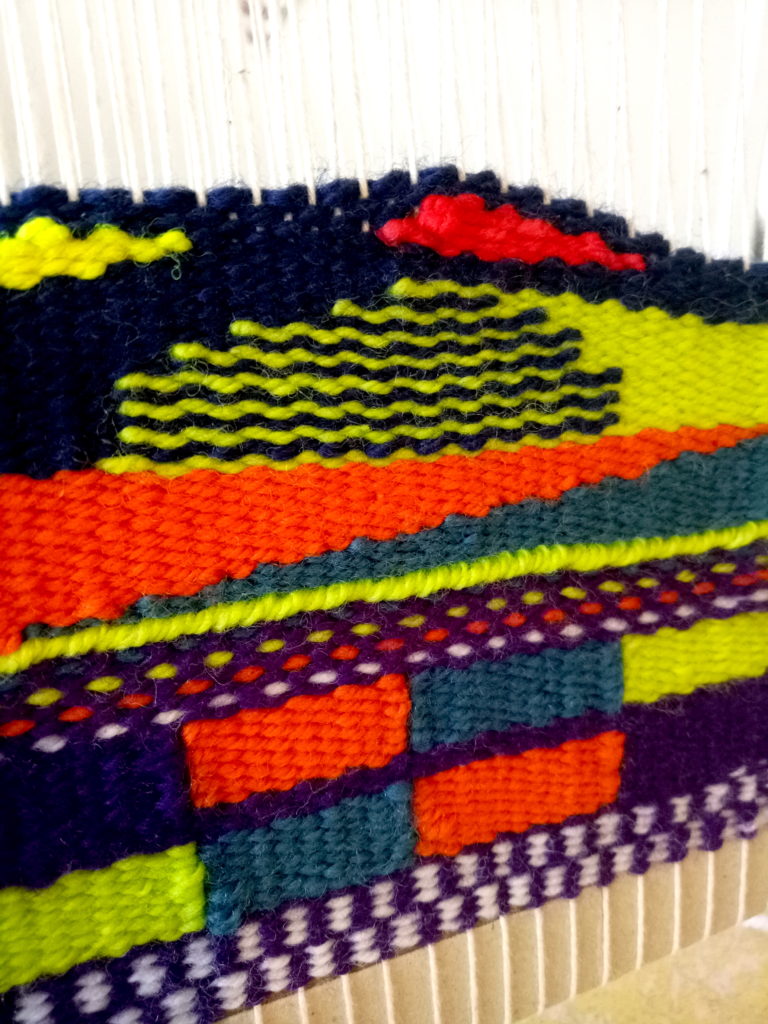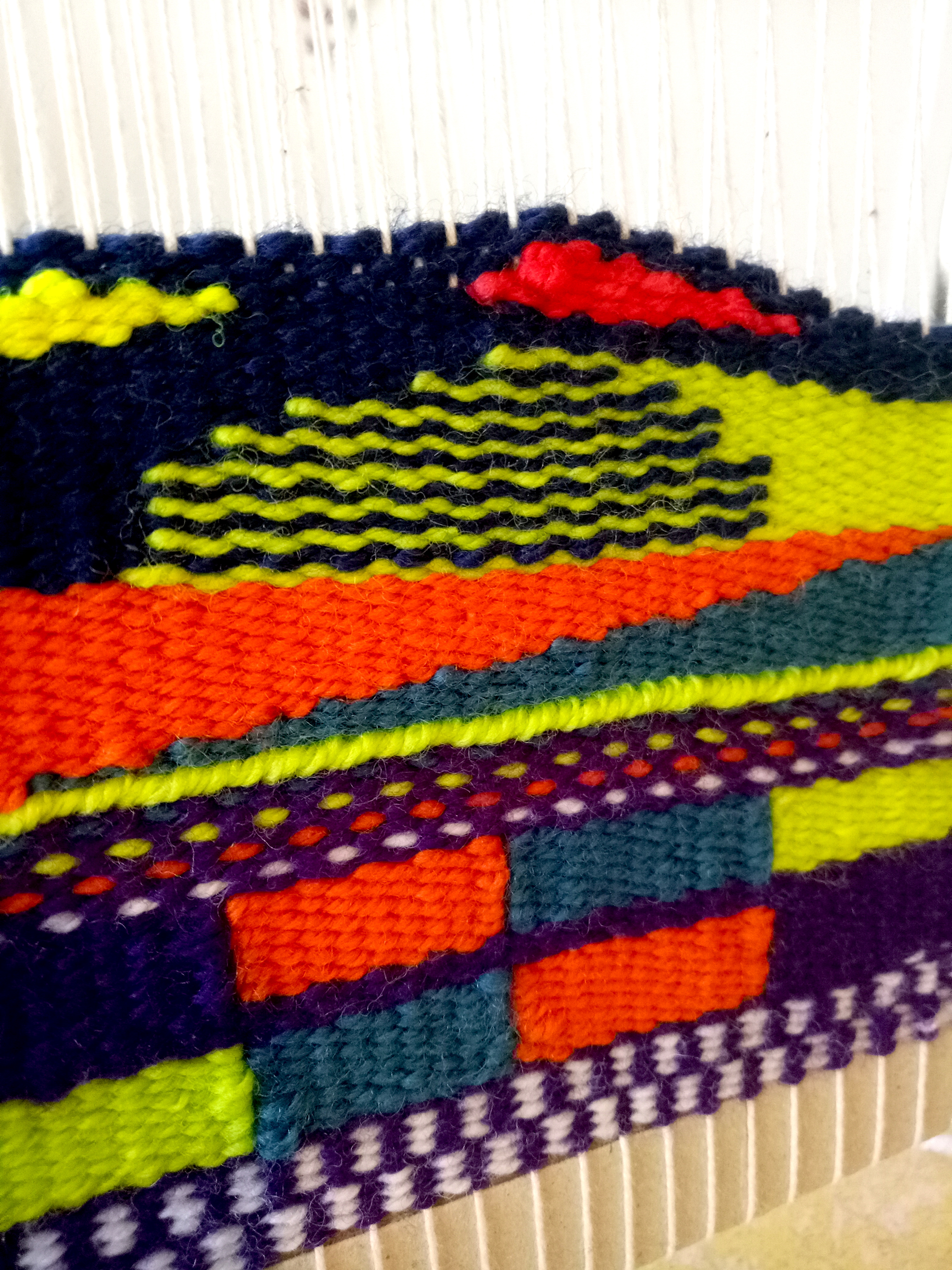You may recall from this blog post or video that I have been quietly longing for a dedicated tapestry loom for some time.
The Mirrix looms were appealing to me for many reasons, so my dream tapestry loom was a Mirrix.
After interviewing the CEO of Mirrix, Claudia Chase on my blog recently, I was even more convinced that this was the right type of tapestry loom for me.
So, I started saving!
Then, a few days ago, this box arrived. A “Knit Spin Weave” card plus a “Mirrix Tapestry Studio” sticker on the front of the box was just the kind of mail I love!
I followed the Mirrix Youtube instructions for warping the loom, which was pretty straightforward. My mind was so focused on getting it warped that I hadn’t really considered what exactly I was going to weave!
So, instead of having a grand plan, I drew some rough lines onto the warp and started weaving with some of my handspun. Then I introduced some hand dyed wool from my stash.
The end result is OK, not brilliant, but it was more about getting to know the loom than weaving a masterpiece. And I certainly did learn a lot, particularly about the kind of tapestry I want to weave in the future.
I still had room on this warp, so I decided to weave a planned sample, following Kirsten Glasbrook’s book Tapestry Weaving.
*Affiliate link
This is a great book if you’re interested in getting started in tapestry weaving, it covers all the basic techniques and includes detailed information on completing the finished piece, including mounting options. I used Kirsten’s sampler on page 40 as inspiration – though her sampler is much more detailed than mine.
I used some very bright and colourful wool and focused on achieving clean, straight lines. No lumps and bumps this time!
Starting from the bottom and working up, these are the techniques I used (these are all listed in fabulous step by step demonstrations in the book).
1. Pick and pick
2. Vertical slits
3. Pick and pick
4. Soumak
5. Diagonal shapes
6. Hatching
7. Distorted weft
And here is the finished piece! I had some challenges with uneven draw in (you can see that my edges have a slight curve rather than just straight lines), but all things considered, I’m pretty pleased. It’s almost a shame to contemplate removing the warp from the loom, the beautiful luminosity of the copper pieces adds to the overall aesthetic!
Update: If you’re interested in learning more about this loom, watch my review here-
In the meantime, if you’re interested in Mirrix Looms, you can read more about them in my interview with CEO Claudia Chase and visit their website for more details.
And, just to let you know, this post is not sponsored by Mirrix in any way, I’m just sharing the love.

